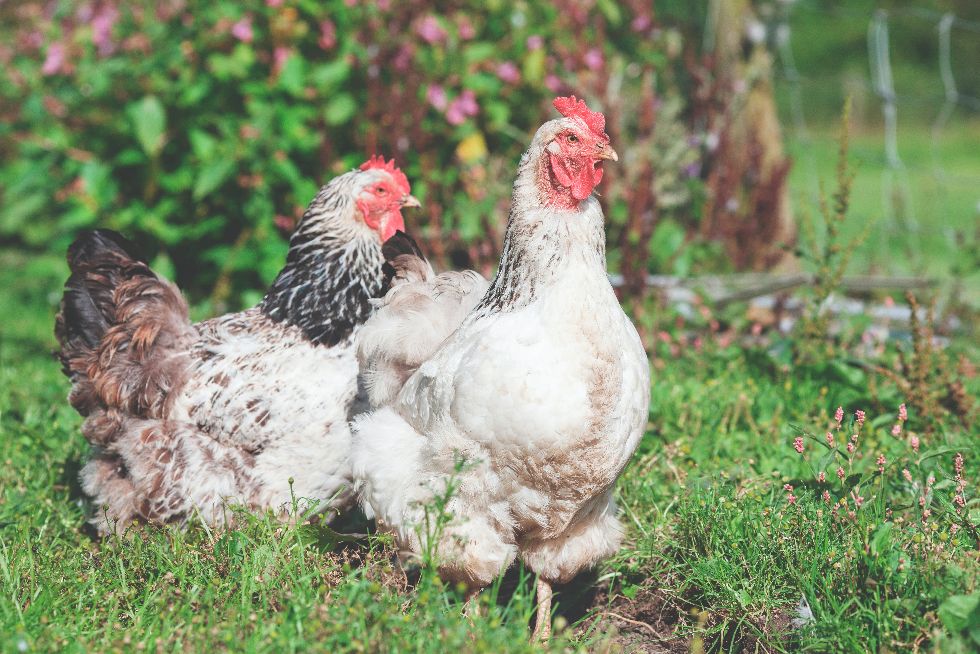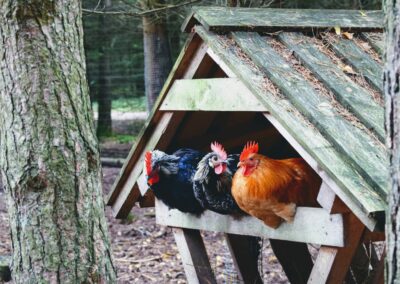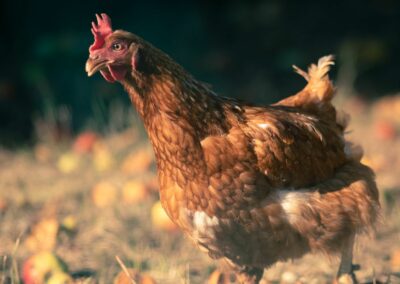In an ideal situation, when you consider the idea of raising animals on your self-sufficient farm, you most likely immediately think of chickens. They process your leftovers, produce fertilizer for the garden, and, depending on your breed of chicken, offer up eggs or meat — what’s not to like?
Many people wonder if chickens are actually cost-effective… the answer? It depends. It depends on how many chickens you keep; how much time, effort, and money you invest in your setup and maintenance; and what you consider to be a good return on your investment. Let’s take a closer look.
1. How Much Does it Cost to Keep Chickens?
The cost of a chicken coop and run
Opinions obviously differ on the cost of raising chickens. Let’s look at what you’ll need. Before you actually obtain your flock, you’ll want to set up everything to raise and maintain happy chickens. Fencing and a coop can be (almost) free if you have the materials available and don’t mind getting your hands dirty, or if you already have a barn or outbuilding in which to house your flock.
Of course, you can make it more expensive by building a fancy coop like these (I certainly wouldn’t mind a chicken coop that’s bigger on the inside).
If you have a large property, I would definitely recommend building a mobile chicken coop and combining that with an electric fence. This combination provides 24-hour protection for your chickens, as well as offers you some two-legged feathery helpers to assist in cleaning up your property.
If you’re thinking “my chickens don’t need much, they’ll be free-ranging anyway,” that’s great, but keep in mind that the less protected your chickens are from predators, the more you might need to invest in new chickens (whether you buy new hens, or you breed your own chicks).
Chicken set-up maintenance
Whatever solution you end up choosing, you’ll want to keep a budget aside for maintenance: refreshing the paint on the chicken coop, repairing chicken-run fencing, fixing the roof, etc.
How much does chicken food cost?
There are some great articles out there that can help you figure out how to feed your chickens for free. I highly recommend Justin Rhodes’ take on feeding your chickens grain-free — and with zero extra budget!
That being said, it’s also just as easy to buy food for your chickens. There is a huge difference in price — from healthy organic food that guarantees that your laying hens will produce more and better eggs — to the cheapest chicken feed available.
We like to feed our chickens as many scraps as possible (kitchen leftovers, garden scraps, even excess harvest we are gifted from friends). In addition, as often as we can, we let the chickens out to free-range and collect their own food. We also, however, make sure that we have enough store-bought chicken mix in stock, just to be certain that our flock always has enough food.
Read more about how much it costs to keep chickens
Although chickens can survive for a day or more without food, it’s obviously best to keep them supplied with adequate food and water at all times. We keep chickens for eggs (and occasionally, meat), thus we want to make sure our chickens are always in prime condition to provide us with fresh eggs every day.
If you want to read more, this article on backyardchickens.com has a great overall analysis of the cost of keeping chickens.
2. Define ROI – what makes chickens cost-effective?
A big part of your chickens’ cost-effectiveness is defined by how you calculate return on investment. Let’s have a look.
Your chickens’ ROI #1: Meat or eggs?
Are you going to keep chickens for meat, eggs, or both? Depending on the answer to that question, you may want to acquire a chicken breed that lays a lot of eggs, a breed for its meat, or a dual breed (chickens who lay eggs but will also give a decent amount of meat).
If you’re looking for a sturdy dual breed, I highly recommend Brahma chickens. There’s a lot to be said, however, for raising a local heritage breed — if you can find one that suits your needs.
Will you be keeping chickens only for your own use, or are you planning to sell eggs and/or meat as well?
If you’re looking to sell your eggs or your chickens, you’re looking at a bigger production rate, and you’ll probably want to invest in a specialized breed. Either a breed of laying hens that lays a lot of eggs as early in life as possible (click here for a list of suitable egg-laying chicken breeds) or a breed of meat birds that you can butcher after 9-12 weeks (click here for an overview of good chicken breeds for meat).
Your chickens’ ROI #2: Fertilizer
If you’re aiming for both self-sufficiency and thus growing your own food, chicken manure is worth its weight in gold. We use the “deep-litter method” (chickens turn their coop’s bedding directly into compost), which saves us from buying fertilizer year after year.
Even if you don’t use the deep-litter method, every time you clean your coop you’ll have chicken manure to use as fertilizer for your garden.
Your chickens’ ROI #3: By-products
Chicken eggs, meat, coop deep-litter bedding, and manure are not the only benefits you’ll receive from your backyard chickens or your budding chicken farm. Did you know that you can use the eggshells in many different ways; crush some of the discarded calcium-enhanced eggshells, sprinkle them among your tomato plants, and watch them thrive.
While by-products like feathers are mostly used solely for at-home decoration and crafting, some companies have discovered ways to turn feathers into fuel bricks — a clever and fascinating way to turn waste into a sustainable heating source!
Your chickens’ ROI #4: Garden prep and maintenance
Gardening with chickens takes special care and requires some experience, common sense, and resilience (pesky chickens can quickly obliterate your tiny seedlings, freshly planted flowers, or flourishing kale plants). Engaging chickens correctly, however, can be a great help in growing food in your garden.
The surest and safest way to encourage your chickens to assist in the garden is to let them prepare your garden beds between seasons. With their scratching, they’ll aerate the soil, and with their incessant nibbling, they’ll gobble up the remaining plants and some roots.
During your garden’s growing season, however, your chickens can continue to assist you by chomping down bugs and weeds… You just have to keep them away from your plants. To protect my cabbages, lettuces, and a few other vegetables, I use cages (as discussed in this article). Furthermore, when it’s nearing harvest, I simply keep the chickens out of my garden. I wouldn’t want my chickens to nibble at my fresh zucchini and tomatoes before I even get a chance to taste them!
Your chickens’ ROI #5: Happiness
I like to make the claim that chickens are better entertainment than television. Observing my flock scratch and peck at the ground, watching them trail me around my farm, or training them to recognize the sound of the food bucket (they’ll come half-flying, half-running) — chickens are guaranteed to make the most grumpy person smile.
3. Are Ducks or Chickens Better for Self-Sufficiency?
Honestly? Ducks or chickens might work better for you; it depends on your own specific needs. Both birds lay tasty eggs (and in fact, if you’re allergic to chicken eggs, you may be able to tolerate duck eggs), help with pest control, can fertilize your garden, and more — but there are also big differences. In describing the pros and cons of ducks vs chickens, I find this article well balanced and not too biased (well, perhaps just a tiny bit in favor of ducks).
If you don’t have the space available for ducks or chickens, you might want to look into quail. These tiny birds have some advantages over chickens, but as I have no experience whatsoever with them, I’ll happily refer you to this article for more info.
Bottom line: Chickens Are Great and Cost-Effective Animals for Increasing Self-Sufficiency
If you want to get started with backyard chickens and become more self-sufficient, there are three things to keep in mind:
- Don’t overestimate the number of chickens you’ll need. Start small, you can always expand later. The fewer chickens you have, the easier it is for them to free-range for food, and the smaller your initial investment.
- Don’t budget (too much) on a chicken coop and run. Your chicken housing doesn’t need to be fancy, but rather, it needs to keep your hens happy and healthy. This way, they can supply you daily with fresh eggs. The same goes with the chicken run: giving your chickens a safe space to roam around means no loss of lives due to predators.
- It’s a learning curve. From the get-go, you may not find the most cost-effective way to keep chickens, but with time, you’ll learn how to lower the cost of chicken feed, increase egg-laying capacity, and/or keep your garden harvest safe while your chickens “help out.”













0 Comments